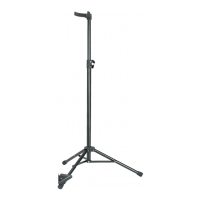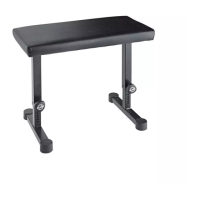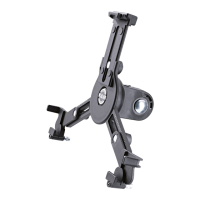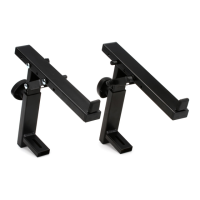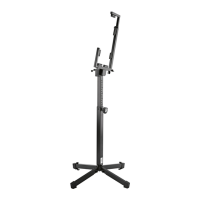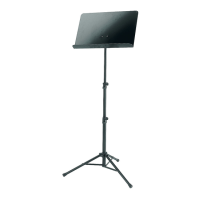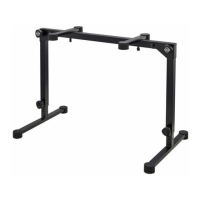FUNCTIONS / USER INFORMATION
TECHNICAL DATA
IN PRACTICE
TEST, MAINTENANCE, CLEANING
FOOTPRINT
- The main consideration when deciding the
- set-up width is the size of the cello
- There are 3 width setting to adjust the
- the stand to suit the instrument’s width
- A wider stand is generally good for stability
TRANSPORT SETTING
- The stand sections can be folded compactly
- and secured with locking pins
- in small spaces
- for mobile use
- When maintaining the throne, be aware of the potential for injury (pinching, knocking).
- It is best to use a slightly damp cloth and a non-abrasive cleaning agent for cleaning.
Materials
Sections, cradle, joint: steel, black
Rivets, locking pins: steel zinc-coated, nickel-coated
Parquet protectors, covers: thermoplastic elastomer (TPE)
Cradle covering: TPE with cork filling
Attachment for the bow holder: PA
Load Cello
Dimensions W: to 450 mm, D: 335 mm, H: 535 mm (with bow holder: 770 mm)
Packed size H x W x D: 580 x 335 x 90 mm, 2.6 kg
Packaging H x W x D: 590 x 350 x 100 mm, 2.9 kg
KÖNIG & MEYER GmbH & Co. KG
Kiesweg 2, 97877 Wertheim, www.k-m.de
14130-000-95 Rev.03 03-80-287-00 1/13
Turn the bow holder forwards 6
Until it reaches a position tilting
slightly backwards 7.
Hang the bow
on the holder 8
Place the instrument in the stand
cradle 9 ...and allow it to lean back 10
FAULT FINDING (F) and SOLUTION (S)
F: Stand wobbles
F: S: Check ground, adjust balancing floor
F: S: protectors 5
F: Cradle width incorrect
F: S: Engage the stud 2 in another hole 4
F: Bow holder cannot be moved
F: S: Bow holder can only be unfolded forwards 6
